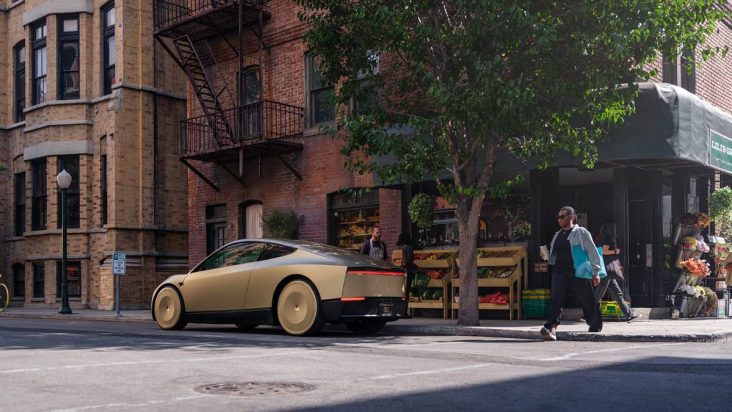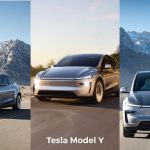Elon Musk is known for his bold predictions—especially when it comes to Tesla’s Full Self-Driving (FSD) technology.
Over the years, he has repeatedly claimed that true autonomy is just around the corner, yet reality has often fallen short of his promises.
However, in Tesla’s Q4 2024 Earnings Call, Musk once again doubled down on his vision, making a huge prediction for Tesla’s self-driving ambitions:
- Tesla will launch an unsupervised, fully autonomous ride-hailing service in Austin, Texas, by June 2025.
- Tesla will expand Robotaxi services to “many cities in America” by the end of 2025.
It’s a massive claim—one that, if true, could change the transportation industry forever. But given Tesla’s history of delayed autonomy promises, can Musk actually deliver this time?
Musk’s Big Announcement: Robotaxis Are Coming Soon
During the earnings call, Musk confirmed that Tesla will officially launch its first autonomous ride-hailing service in Austin, Texas, this June.
“So, we’re going to be launching unsupervised full self-driving as a paid service in Austin in June.”
He further clarified that no driver will be inside the car, and Tesla is already working with the City of Austin to finalize the details.
Musk emphasized that while Tesla believes FSD can work anywhere in the U.S., the company will take a cautious approach before expanding.
“We just want to put our toe in the water, make sure everything is OK, then put a few more toes in the water, then put a foot in the water with safety of the general public as our top priority.”
That approach makes sense, given that self-driving regulations vary by state and Tesla will likely face different challenges in each city.
Musk’s Even Bigger Prediction: Robotaxis in Many U.S. Cities by Year-End
If launching in Austin wasn’t ambitious enough, Musk took things a step further:
“Tesla is still on track to launch autonomous ride-hailing in Austin in June and roll out to many cities in America by the end of this year.”
If this happens, it would be one of the biggest breakthroughs in self-driving history.
But let’s be real—Musk has been making similar predictions for years, often stating that Tesla would achieve full autonomy “by the end of the year.”
Can Tesla Actually Pull This Off?
Tesla’s ability to expand Robotaxi services across America will depend on three key factors:
Achieving True Self-Driving Safety
For Tesla to roll out its Robotaxi fleet, its FSD software must be far safer than a human driver—not just in theory, but in real-world conditions.
“The threshold is achieving safety far in excess of the average human driver.”
So far, Tesla’s FSD v12+ has shown major improvements, but it’s still not fully autonomous in all situations.
And it only gets better from here.
Tesla is still on track to launch autonomous ride hailing in Austin in June and roll out to many cities in America by the end of this year.
The threshold is achieving safety far in excess of the average human driver.
Ultimately, autonomous… https://t.co/e81v28agSy
— Elon Musk (@elonmusk) February 10, 2025
Navigating Strict Regulations
Even if Tesla’s Robotaxi service is technically ready, it still needs government approval.
- Many states have strict laws about self-driving cars.
- Some require human supervision for all autonomous tests.
- Others have banned self-driving services outright.
Austin may be an ideal first location, but expanding to places like California, New York, or Florida could take much longer due to legal hurdles.
Implementing Backup Safety Measures
Even companies that claim full autonomy (like Waymo and Cruise) still use teleoperation services—a system where remote human operators can take control of the vehicle if something goes wrong.
- Will Tesla implement a teleoperation backup system?
- What happens if an autonomous Tesla gets stuck or makes a wrong decision?
If Tesla doesn’t have a clear backup plan, regulators might block the rollout in most cities.
A History of Missed Deadlines: Should We Trust Musk’s Timeline?
While the idea of a nationwide Robotaxi fleet in 2025 is exciting, Musk has made similar promises before—only to miss his own deadlines.
Here are some past claims that didn’t come true:
- 2019: Musk said Tesla would have “1 million Robotaxis on the road” by 2020.
- 2021: He claimed Tesla was “very close” to full autonomy.
- 2023: He predicted FSD would be safer than a human driver by the end of the year.
None of these predictions materialized.
Will 2025 Finally Be the Year of Tesla Robotaxis?
Despite Musk’s history of optimistic deadlines, there’s a real possibility that Tesla could make major strides in autonomy this year.
- Austin’s launch is happening in June (unless there’s an unexpected delay).
- Tesla’s FSD software is rapidly improving, and could soon reach the safety threshold regulators demand.
- If Tesla successfully launches in Austin, expansion to other cities may happen faster than expected.
But before we get too excited, we need to see:
- How well does the Austin service actually perform?
- Will regulators allow Tesla to expand beyond Texas?
- Will Tesla’s Robotaxis be safe enough for mass adoption?
If Tesla can prove its self-driving system works flawlessly in real-world ride-hailing scenarios, this could be a game-changer for transportation.
But if history is any indication, don’t be surprised if the “nationwide” rollout takes longer than Musk predicts.
What Do You Think?
Will Tesla actually launch its Robotaxi service in multiple U.S. cities by the end of 2025? Or is this another overly optimistic Musk prediction that will be delayed again?
Drop your thoughts in the comments below.


